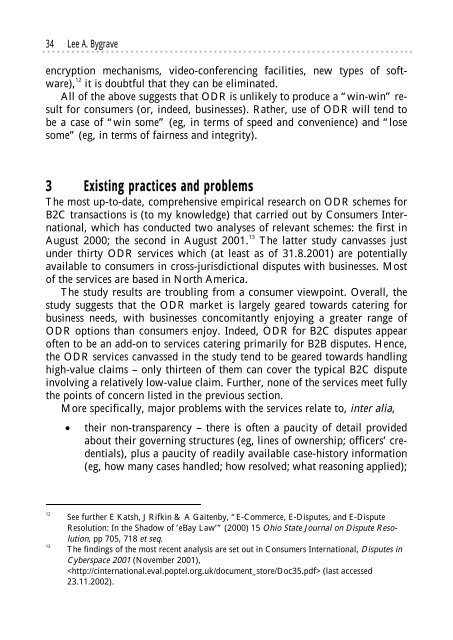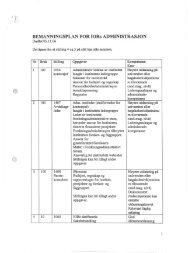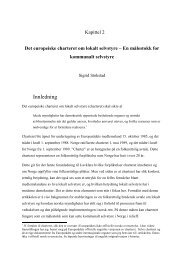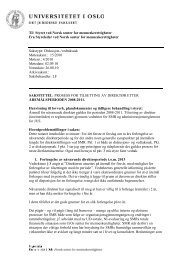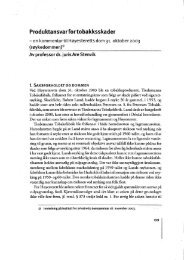Lee A. Bygrave (red.) YULEX 2002 - Universitetet i Oslo
Lee A. Bygrave (red.) YULEX 2002 - Universitetet i Oslo
Lee A. Bygrave (red.) YULEX 2002 - Universitetet i Oslo
Create successful ePaper yourself
Turn your PDF publications into a flip-book with our unique Google optimized e-Paper software.
............................................................................<br />
34 <strong>Lee</strong> A. <strong>Bygrave</strong><br />
encryption mechanisms, video-conferencing facilities, new types of software),<br />
12 it is doubtful that they can be eliminated.<br />
All of the above suggests that ODR is unlikely to produce a “win-win” result<br />
for consumers (or, indeed, businesses). Rather, use of ODR will tend to<br />
be a case of “win some” (eg, in terms of speed and convenience) and “lose<br />
some” (eg, in terms of fairness and integrity).<br />
3 Existing practices and problems<br />
The most up-to-date, comprehensive empirical research on ODR schemes for<br />
B2C transactions is (to my knowledge) that carried out by Consumers International,<br />
which has conducted two analyses of relevant schemes: the first in<br />
August 2000; the second in August 2001. 13 The latter study canvasses just<br />
under thirty ODR services which (at least as of 31.8.2001) are potentially<br />
available to consumers in cross-jurisdictional disputes with businesses. Most<br />
of the services are based in North America.<br />
The study results are troubling from a consumer viewpoint. Overall, the<br />
study suggests that the ODR market is largely gea<strong>red</strong> towards catering for<br />
business needs, with businesses concomitantly enjoying a greater range of<br />
ODR options than consumers enjoy. Indeed, ODR for B2C disputes appear<br />
often to be an add-on to services catering primarily for B2B disputes. Hence,<br />
the ODR services canvassed in the study tend to be gea<strong>red</strong> towards handling<br />
high-value claims – only thirteen of them can cover the typical B2C dispute<br />
involving a relatively low-value claim. Further, none of the services meet fully<br />
the points of concern listed in the previous section.<br />
More specifically, major problems with the services relate to, inter alia,<br />
12<br />
13<br />
• their non-transparency – there is often a paucity of detail provided<br />
about their governing structures (eg, lines of ownership; officers’ c<strong>red</strong>entials),<br />
plus a paucity of readily available case-history information<br />
(eg, how many cases handled; how resolved; what reasoning applied);<br />
See further E Katsh, J Rifkin & A Gaitenby, “E-Commerce, E-Disputes, and E-Dispute<br />
Resolution: In the Shadow of ’eBay Law’” (2000) 15 Ohio State Journal on Dispute Resolution,<br />
pp 705, 718 et seq.<br />
The findings of the most recent analysis are set out in Consumers International, Disputes in<br />
Cyberspace 2001 (November 2001),<br />
(last accessed<br />
23.11.<strong>2002</strong>).


